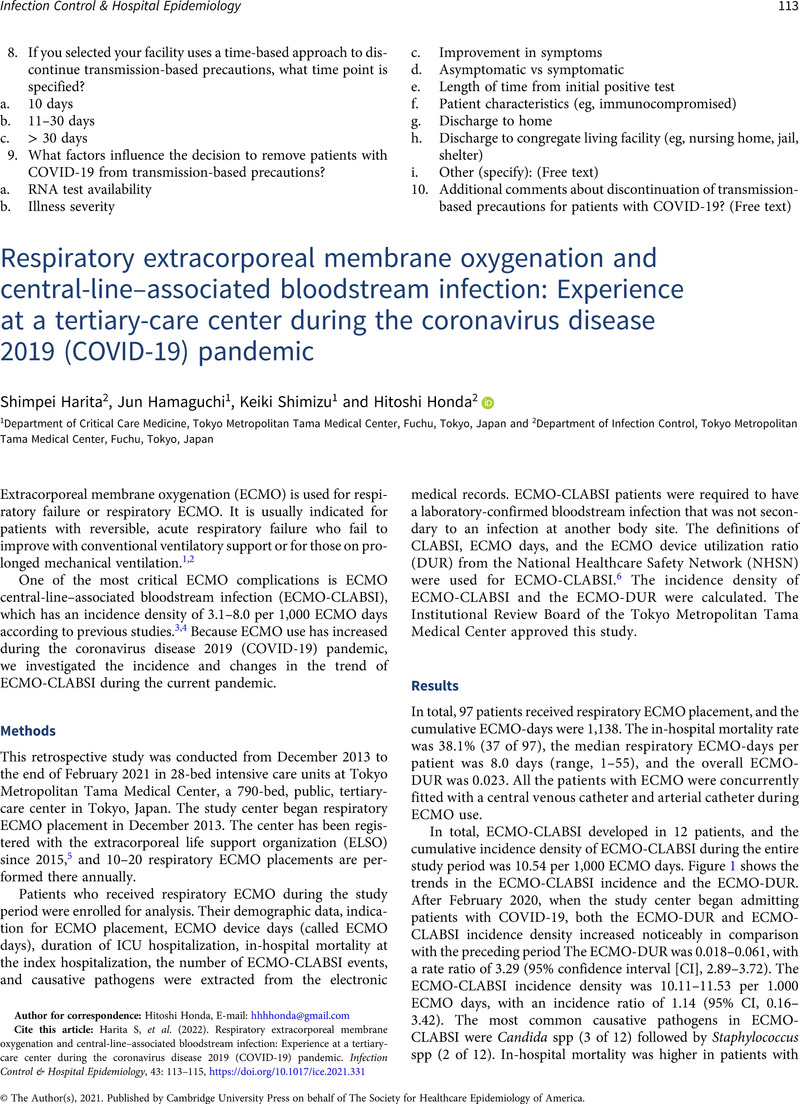National Healthcare Safety Network (NHSN). Bloodstream infection event (central-line–associated bloodstream infection and non–central-line–associated bloodstream infection). Centers for Disease Control and Prevention website.
https://www.cdc.gov/nhsn/pdfs/pscmanual/4psc_clabscurrent.pdf. Accessed April 14, 2021.
Google Scholar 